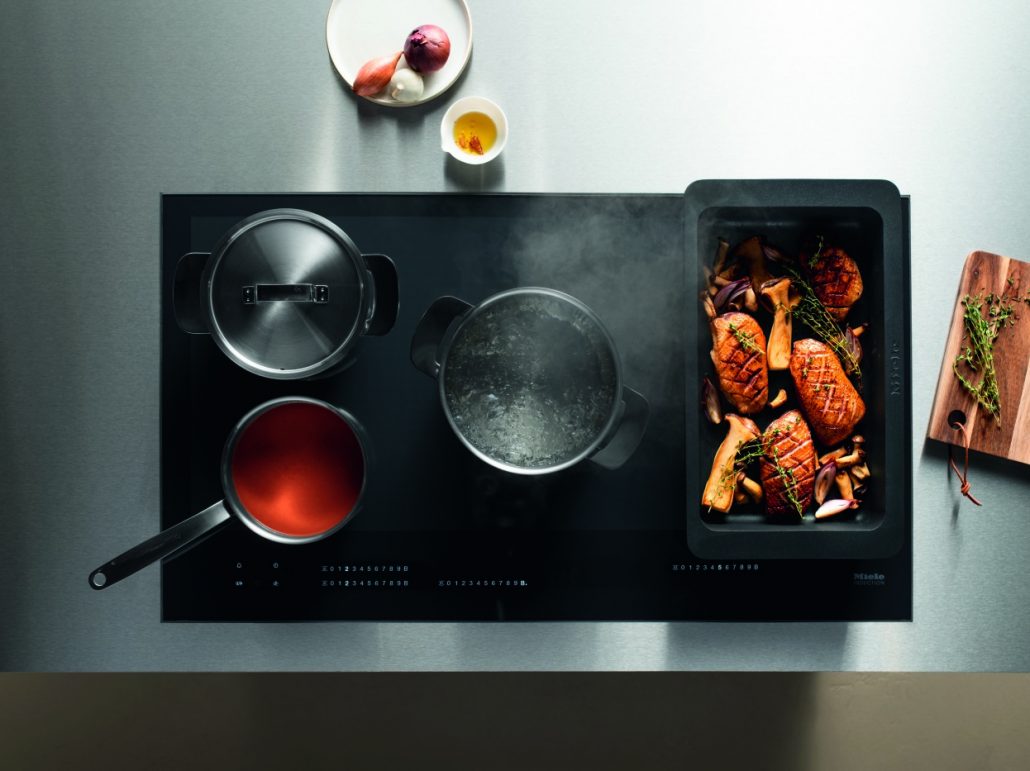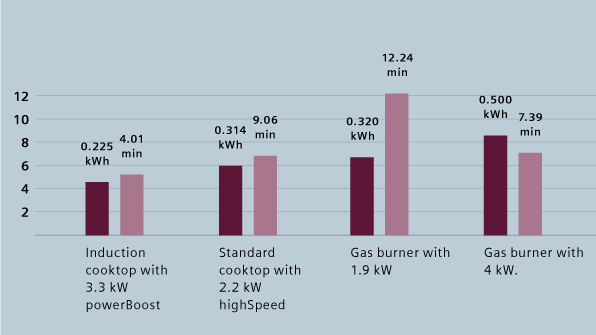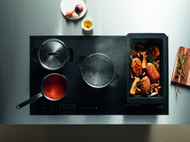Induction Cooktops - Why they take top honours in cooktops
Posted by Adrian - Technical Product Specialist on 17th Mar 2015
Why are Induction Cooktops so good? And lets put the myths to bed!

Induction cooktop technology has been around for over 50 years with some proof dating back as early as the start of the 1900's. So yes this technology is definitely not new, but to some it is more about moving away from the comfort zone of a common gas cooktop.
Gas cooktops in Australia will always be a popular option due to it being so readily available as well as being used by so many people over the years. Yet this doesn't mean it is a better performer than induction, Induction will always out perform a gas cooktop in all areas. Let me make the point that this article is about why Induction ranks as the best option. Yet as per any appliance, of course someone may still be happy & or comfortable with gas.
Lets firstly put the Myths to bed:
- Cookware - No you don't need to throw out your cookware for an
induction cooktop. Test your current cookware with a standard magnet, if it sticks to the base it will definitely work. If it doesn't there is still a chance it will work.
- All good based cookware will work on an induction cooktop with products such as pure Copper or Aluminum not working.
- The key is ferrous metal (a form of iron) which is found in all good stainless steel pots & cast iron. Saying all of the above, upgrading the cookware can sometimes be minimal depending on the level you go for. Start from basic cookware at $20 but do keep in mind the better the cookware the better the performance.
- All good based cookware will work on an induction cooktop with products such as pure Copper or Aluminum not working.
- Favourite Pot /Percolator - If you have that favorite copper/aluminum pot, pan or percolator ("cafeteria" for italians) that you wish to use there is a conversion plate available
- The Induction conversion plate (click link to view) transfers heat into the plate then you may put any sized cookware that isn't compatible on top.
- Running costs - Induction is the most Eco friendly cooktop option available. Induction only ever uses what it requires with no wasted fuel, this in turn also shortens cooking times - See 1.Efficient for more details & Chart
On the Australian market it seems that some try to find a negative with Induction cooktops so.........
Lets show the facts and why induction is rated as the best cooktop option:
- Efficient - Induction produces 100% efficiency every time you use it. The best gas burner in the world can only get around 60% of heat (Due to being an open flame & oxygen). Induction uses minimal short bursts of electricity to operate unlike a standard electric cooktop which is constantly drawing power to heat up an element (See Running Chart at Bottom of Article)
- Quick & Cheaper to run - On average 50-60% less running time than Gas and 60-70% less running costs than normal electric
- Instant - From going to a high temperature, down to the most delicate simmer is instant with the touch of a button
- Perfect Even Heat - Induction generates even heat through a pot/pan/griddle etc so there is no hot or cold spots like on a gas cooktop. This gives you perfect evenness for all cooking requirements, this also allows less stirring and keep warm options to gently keep your food warm without overcooking.
- Most Powerful Cooktop - Induction is 5-8 times more powerful than a gas cooktop. Perfect for quick & powerful frying, boiling, griling & wok cooking.
- Wok Cooking - Yes Induction is the best performer for wok cooking as it has the highest amount of heat generally 5 times more than a gas wok (Depending on wok burner mj rating). Also to clarify - Woks gain their heat from the base of the wok then flare up the sides to give even high heat for perfect wok cooking. A gas flame should never be coming up the sides of a wok as this is 1. A hazard and 2.Loss of direct heat.
- Accurate - Induction is the most accurate cooktop from high end temperature cooking (frying etc) to the most delicate simmering or melting
- Melting & Simmering - Induction can go to such low levels it can melt chocolate in a pot or pan (Yes no double boiling required) or simmer a delicate recipe or even have a soup on a keep warm for 8-10 hours
- Cleaning - Induction provides the easiest surface to clean with a simple wipe over with a wet & dry cloth which on average would take under 20 seconds to clean. There are also specific cleaners to keep the ceramic glass in great condition. Or you may have dried something on, no worries simply use a ceramic glass scraper to get this off without leaving any marks on the cooktop.
- Safer - Induction never conducts heat into the glass only residual heat is left from underneath the cookware which is reflected onto the glass - In most cases if you were to touch the glass after taking the cookware off it would be hot but you would not burn* yourself like a Gas or Electric cooktop - *Be careful touching any surface if unsure.
- Pause Options - Some models will have the option of pausing if you need to attend to something else and the cooktop automatically brings itself to a keep warm while you are away.
- Timers - Most models will have programmable timers which will allow you to switch the unit off after a specific time, from simmering a sauce for 30 minutes to reminding you to switch off pasta boiling in 7 minutes to keeping an item warm for 2 hours.
- Fumes & Accidents - With induction there is no excess fumes to worry about like gas and near minimal chance of having an accident or fire
So are there any negatives of induction cooktops?
- Power/Electrical requirement (if not there) - If you don't have the existing power connection then you will need to upgrade with a new line which will be an additional cost yet for the benefits you would pay this off in a very short time. Like paying for a new line for a split system air con.
- Cost - Induction cooktops generally cost more initially yet in the long run will be well worth it due to so many benefits.
Things to look out for:
- Not all inductions cooktops are the same in terms of quality of glass, parts, engineering, performance & power output - We will always advise the differences to make your choice easier- But not all are the same as per any appliance
- Standard Round Zones vs Flexi Zones - If a similar brand inductor they will perform the same yet the flexi zone as its name suggests will be more flexible allowing you to put different sized items as well as retangle and square cookware (Griddle Plates, Teppanyaki Plates and Multiple pots in these larger zones)
- Tiers - You will have brands at different levels that you will need to compare like in terms of type of inductors, quality and ability. This will generally represent the differences in price.
Like any product in your kitchen it is what you personally prefer to have & use within your budget.
I have personally removed a gas cooktop for an induction cooktop and would never go back. I would always recommend to anyone to highly consider induction as the best option in cooktop.
Comparing Induction vs Other Cooktops (Courtesy of BSH) - Boiling 2 Litres of Water
Time & Fuel used on average Conversion - Gas 1.9kw = 6.84mj & 4kw Wok = 14.4mj

Induction uses less power due to short busts comparing to constant running of a standard electric element or gas burner. In short standard electric cooktops use 60% more electric and gas uses 60-70% more fuel than Induction.
Are there health risks involved with using induction hobs?
In spite of a great number of studies, scientists so far have found no proof that electromagnetic fields pose any environmental or health risks. Like any domestic appliance, induction hobs generate an electromagnetic field around themselves. However, the field is many times less powerful than that generated by an electric razor, a hair dryer, power drill, microwaves, mobile phones or WIFI.

